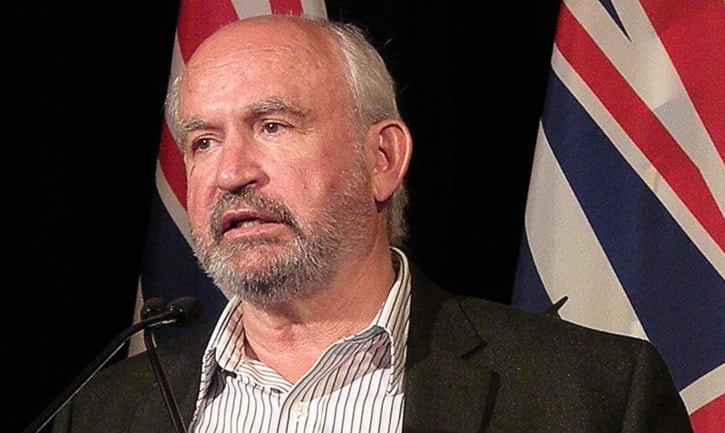Changes to B.C.’s mining codes for the safety of tailings storage facilities were introduced by B.C.’s Minister of Energy and Mines Bill Bennett Wednesday.
The changes include seven recommendations made from the Independent Expert Engineering Panel’s investigation report into the Aug. 4, 2014 Mount Polley tailings storage facility (TSF) breach, Bennett told reporters during a press conference.
“These changes ensure that the mining code includes design standards for TSFs that are tailored to the particular conditions encountered in B.C.,” Bennett said.
“The changes for the TSFs and dam safety emphasize the protection of the public and the environment. The Mount Polley disaster was unprecedented for B.C., but it did happen. We have now taken steps to ensure that such a disaster can never happen again in British Columbia.”
Updates to the TSF portion of the mining code include new design and operations criteria that specify requirements for the steepness of downstream slopes, the minimum static factor of safety and new seismic and flood design criteria, and water balance and water management plans.
B.C.’s chief inspector of mines Al Hoffman joined Bennett for the conference and said his ministry has responded to each of the independent investigation panel’s recommendations.
“We will now require all existing mines in B.C. with TSFs to establish an independent tailings review board by Dec. 31, 2016,” Hoffman said.
“In addition the terms of reference and membership of the review boards must be approved by myself as the chief inspector of mines.”
Each mine will also be required to submit an annual report that includes an overview of its independent review board’s activities. All the reports will be posted online.
Hoffman said mine managers have until Sept. 30, 2016 to notify him what engineer of record has been retained by the mine and who at the mine has been designated as responsible for safe management of the TSF.
“We are also giving mine managers until Dec. 31, 2016, to have a water balance and water management plan prepared by a qualified person,” he added.
So far the government has addressed 20 of the 26 recommendations from the independent expert panel and the Chief Inspector of Mines (CIM) reports.
“The remaining CIM recommendations will be complete by the end of the summer of 2017,” Hoffman said, noting the government is also working on implementing the 17 recommendations made by the auditor general’s report.
Bennett said the target for implementing and enforcing the health and safety revisions to the mining code is early 2017.
“The public will have an opportunity to make comments on that until the end of September,” he added.
Bennett told the Tribune additional staff will be hired within the Ministry of Energy and Mines to implement all of the recommendations from all three reports.
“We are going to need more resources and I think that government has to recognize that this small ministry and the people working within it have been working really hard for decades,” Bennett said.
“It’s time we recognize we can’t do it with the people that we have there. The answer is yes we are going to need more resources.”
